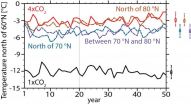Seattle, WA, April 28, 2015 - New evidence suggests that lung cancer surgery patients are at higher risk of developing venous thromboembolism, including deep vein thrombosis (DVT) and pulmonary embolism (PE), than previously thought, with elevated risks of complications or death. When thromboemboli occur, they may be asymptomatic or attributed to post-surgical pain or complications, and may reflect both the lung cancer itself as well as compromised lung function after surgery. These incidents may also be ascribed to an inconsistent approach to prevention that currently exists among thoracic surgeons and hematologists who care for these patients. Three presentations at the 95th Annual Meeting of the American Association for Thoracic Surgery explore the problem of venous thromboembolism (VTE) after surgery for lung cancer.
Symptoms of PE include breathing difficulties that begin suddenly, rapid breathing, rapid heart rate, chest pain, cough, coughing up blood, fainting, and sense of impending doom. Common symptoms of DVT are lower-extremity swelling, localized warmth and tenderness, fever, and cyanosis. The effects of VTE range from mild to life-threatening.
In the first report, Yaron Shargall, MD, who is Head of the Division of Thoracic Surgery and holds the Juravinski Professorship in Thoracic Surgery at McMaster University (Hamilton, ON), and colleagues from McMaster University (Hamilton) and the University of Toronto will present the results of the first prospective analysis of the incidence of VTE following oncologic lung resection as part of the General Thoracic Surgery Moderated Poster Competition. This study, funded by the Heart and Stroke Foundation of Canada, looked at outcomes for 157 patients who underwent thoracic surgery for primary lung cancer (89.9%) or metastatic cancer (6.3%). All patients received blood thinners (unfractionated heparin or low molecular weight heparin) and mechanical VTE preventative treatment (graduated compression stockings) from the time of surgery until leaving the hospital.
Two weeks later, these patients were evaluated for the presence of VTE signs and symptoms. Clinical outcomes were evaluated at 30±5 days post-operatively using CT pulmonary angiography and bilateral Doppler venous ultrasonography. Patients who had developed symptoms suggestive of VTE within the 30 days after surgery underwent urgent CT-PE examination, and a repeat scan 30-days postoperatively if the first scan was negative. Patients with VTE were monitored and treated.
In this group among patients considered to be at high risk of VTE because of their lung cancer, investigators found 19 VTE events, a 12.1% incidence rate. These included 14 PEs (8.9%), three DVTs (1.9%) and one combined PE/DVT. One patient developed a massive left atrial thrombus originating from a surgical stump, and died. For all 157 patients, the 30-day mortality rate was 0.64% but 5.2% for those who had a VTE. "This demonstrates the clinical importance and relative fatality of VTE following lung cancer surgery," explained Dr. Shargall.
All those diagnosed with a VTE had undergone anatomic resections (lobectomy or segmentectomy) and most had primary lung cancer. The clots tended to form on the same side as the lung surgery. The majority developed lung clots without forming DVTs beforehand. The investigators examined factors that might distinguish those who developed clots from those who did not, and could not find differences in age, lung function, hospital length of stay, comorbidities, lung cancer stage, smoking status or Caprini Score (a score correlating to each patient's risk of developing VTE post-operatively).
Among patients diagnosed with a VTE, only 4 (21.1%) showed symptoms. All the events were diagnosed after the patient left the hospital and only because the patients were screened for VTEs as part of the study. "This study shows that a significant proportion of lung cancer surgery patients are at risk of VTE, and indicates a need for future research into minimizing the occurrence of DVT and PE. It is possible that extended use of blood thinners beyond hospital discharge may reduce the number of patients who experience these life-threatening events and may help to reduce the rates of death after lung surgery," stated Dr. Shargall.
In a related study, researchers from the Cleveland Clinic studied the effects of post-operative screening on rates of VTEs. During the General Thoracic Surgery Simultaneous Scientific Session, Siva Raja MD, PhD will report on the incidence of VTEs in 112 patients who underwent surgical removal of the lung (pneumonectomy) for benign and malignant indications, who were screened for these complications and compared them to rates of a previously published group of 336 similar patients who did not undergo VTE screening.
The researchers found that the percentage of in-hospital VTEs in the screened group was almost three-times higher than those not screened (8.9% vs. 3.0%) and more than twice as high during the 30-day postoperative period (13% vs. 5.0%). In the screened group, 10 of 112 patients had VTE detected by screening just before discharge and four additional patients developed symptomatic VTE within 30 days despite a negative pre-discharge screen. The risk of VTEs peaks six days after surgery.
At the Cleveland Clinic, routine screening for VTE after pneumonectomy prior to discharge was adopted in 2006. "We find that a large proportion (50%) of VTEs occurred prior to the time of discharge, and the risk of developing symptomatic VTE remained elevated for 30 days. It is possible that the prevalence of VTE may be even higher should a comprehensive serial screening program be initiated," noted lead investigator Siva Raja, MD, PhD, of the Heart and Vascular Institute, Department of Thoracic and Cardiovascular Surgery, at the Cleveland Clinic.
VTEs are a particular problem after pneumonectomy, since these patients often have low pulmonary reserve to withstand the impact of PE, commented Dr. Raja. Indeed, this study also showed that post-pneumonectomy patients who develop VTE face a higher risk of death than those who do not. For this reason, Dr. Raja suggests that these patients be given blood thinner medications for a longer duration, as well as undergo repeat screening test for VTE even after discharge.
A third presentation addresses the crucial question of how to identify post-surgical lung cancer patients who are at greatest risk of developing a VTE. In a poster presentation that is part of the General Thoracic Surgery Modified Poster Competition, Virginia R. Litle, MD, Associate Professor of Surgery, Boston University School of Medicine, will demonstrate that the Caprini Risk Assessment Model can be used to stratify post-surgical lung cancer patients according to VTE risk.
"The Caprini Risk Assessment Model (RAM) is used as a VTE risk assessment tool in other surgical specialties, including general, vascular and plastic surgery as well as gynecologic oncology, noted Dr. Litle. "In abdominal and pelvic cancer patients, the RAM helps physicians evaluate extended prophylactic use of blood thinners, but it has not been applied in thoracic surgery."
The Caprini RAM is made up of about 40 risk factors, including open surgery, history of VTE, central venous access, BMI ? 30, and malignancy. Based on the Caprini score, patients may be categorized into moderate (?4), high (5-8) and highest (>9) VTE risk groups.
In this retrospective chart review of 232 patients who underwent lung resection from 2005-2013, the 60-day postoperative VTE incidence was 5.17% (12/232). Six of the 12 patients had a PE.
The mean Caprini score for those who developed VTEs was significantly higher than the mean score for those who did not have VTEs (11.83 ± 3.74 vs. 8.07 ± 2.84, p< .001). The incidence of VTEs was 0% in the low-to-moderate Caprini score group, 1.67% in the high Caprini score group, and 10.42% for those with the highest Caprini scores. The one death from a PE was patient whose score fell within the highest Caprini score group (16). When 9 was used as the cutoff for highest risk, the RAM had an 80% sensitivity, 60.9% specificity, and 61.2% accuracy.
More than 90% of VTEs occurred in patients who had undergone open thoracotomy. Because minimally-invasive video-assisted thoracoscopic surgery did not seem to impact a patient's risk of VTE, the researchers recommended that it should not be added as new variable in the Caprini RAM.
"This is the first study to demonstrate the predictive ability of the Caprini RAM in post-operative lung resection patients," said Dr. Litle. "This risk assessment scoring system can be used to determine which lung resection patients may potentially benefit from preventive blood thinner therapy after discharge. We have measured these scores and found that a prolonged course of enoxaparin sodium (Lovenox) or other blood thinners may improve the risk of dying of this complication after a lung cancer operation."
INFORMATION:

